I’ve definitely got some good books for you to add to your list! There were a bunch that came all at once at the library and I tried to read as many as I could. So many good ones!
#1 – The Nowhere Child by Christian White
Wow was this book outstanding! I could not put it down and the twist at the end was one I did not see coming. The book and the ending was very satisfying.
Kim is a 28 year old photographer and professor at a college in Australia. Her life is a little lonely right now. Single, her mom recently died of cancer, she has her half sister but she feels alone and a little lost. One day a stranger from America shows up to her college campus during her lunch break and drops some startling allegations on her: she might really be Sammy Went, who was kidnapped in Kentucky when she was 2 years old.
Kim is reeling and doesn’t know what to believe, and definitely doesn’t want to believe her beloved dead mother was a kidnapper. The story unfolds, she ends up going to Kentucky to figure out what happened and the story is startling, riveting and kind of crazy.
The book is brilliantly paced, written well and creepy. Highly recommend!
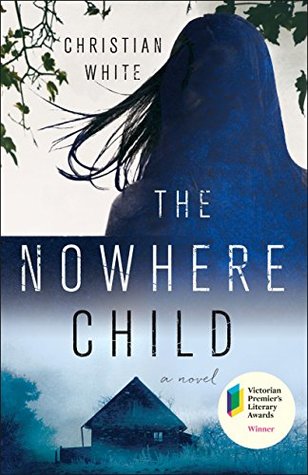
#2 The Radium Girls: The Dark Story of America’s Shining Women by Kate Moore
I’ve had this book for years and finally read it. It’s breathtakingly awful but so important to read. During WWI, these girls, 15-25 years old, were destroyed. They got what they thought was a GREAT job with a high wage. Painting the dials on clocks with radium paint…guaranteed safe…
” The U.S. Radium Corporation had insisted that its product was safe. After Marie Curie and her husband discovered radium in 1898, it had been heralded as the new cure-all and was added to toothpaste, water, food, and cosmetics—with little regulation; sometimes it was enough just to say your product contained radium, which was costly to obtain.”
“Each dial-painter had her own supply. She mixed her own paint, dabbing a little radium powder into a small white crucible and adding a dash of water and a gum arabic adhesive: a combination that created a greenish-white luminous paint, which went under the name “Undark.” The fine yellow powder contained only a minuscule amount of radium; it was mixed with zinc sulfide, with which the radium reacted to give a brilliant glow. The effect was breathtaking.”
But it wasn’t safe, despite what the company was telling everyone.
” ‘We put the brushes in our mouths,’ Katherine said, quite simply. It was a technique called lip-pointing, inherited from the first girls who had worked in the industry, who came from china-painting factories.
” ‘When I would go home at night, my clothing would shine in the dark.’ She added, ‘You could see where I was—my hair, my face.’ “
They were called the “ghost girls” because they glowed. Chilly. But soon, the girls started having issues.
“… one woman got sores on her mouth after just a month of working there.”
Mollie Maggia was one of the first victims who ended up dying from radium poisoning. But it was a slow, very painful death.
“Mollie had more teeth out, as Knef tried to stop the infection in its tracks by removing the source of her pain—but none of the extractions ever healed. Instead, ever-more agonizing ulcers sprouted in the holes left behind, hurting her even more than the teeth had. Mollie struggled on, continuing to work at the studio, even though using her mouth on the brush was extremely uncomfortable..Sometimes, Knef didn’t even have to pull her teeth anymore; they fell out on their own. Nothing he did arrested the disintegration in the slightest degree.”
The descriptions in the book of the girls suffering was absolutely horrific. It is not something to take lightly–and yet, for years, everyone involved from the companies that hired them to the doctors, lawyers and work safety committees, claimed their issues weren’t from their jobs. Mollie Maggia’s doctor said she died of syphilis. (A later postmortem autopsy showed she had indeed died of radium poisoning–her coffin and corpse GLOWED when it was dug up!)
(Read more here: http://theradiumgirls.com/the-girls/4593781028 )
“Despite the dim fall day, the coffin seemed to glow with an unnatural light; there were “unmistakable signs of radium—the inside of the coffin was aglow with the soft luminescence of radium compounds.” “
The surviving girls suffering from radium poisoning, and the families of the victims who had died, eventually went to court.
“…a new law had come in only that January that made industrial diseases compensable. But—and it was a big but—only nine diseases were on the permitted list, and there was a five-month statute of limitations, meaning any legal claim had to be filed within five months of the point of injury.”
This was a ground breaking event and helped changed the laws and rules around work safety, especially for women.
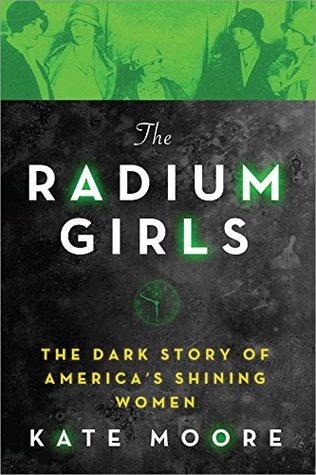
#3 Lock Every Door by Riley Sager
Jules is in her mid-twenties and her life is falling apart. She finds her boyfriend cheating on her on the same day she gets laid off of her job. She’s broke, has nowhere to go and no resources. She sees an ad for a apartment sitter in one of the most mysterious, notorious and rich buildings in New York. For three months she can make $12k for just being an apartment sitter. She feels like this is the miracle she needs. But once she moves in, she realizes things aren’t what they seem.
This book had a lot of mixed reviews. A lot of people felt like the ending was unbelievable and I had a moment where two of the theories made me think “are you kidding me? That is so lame” but then the real ending was revealed and I felt like it was satisfying. Unrealistic? Yes, but satisfying. I enjoyed the book. The author did a good job building suspense. I love books about creepy houses. So it worked for me.
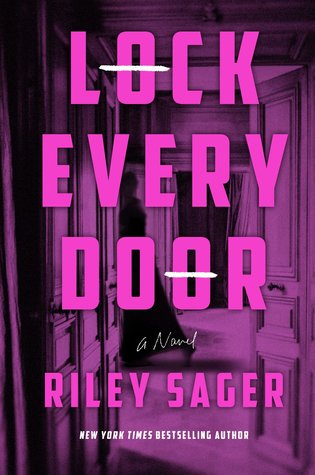
#4 Columbus: The Four Voyages by Laurence Bergreen
I have mixed feelings about this book, mostly because it made me question my opinion about Columbus.
I wanted to read about Columbus after reading the book about Queen Isabella. The book is good, drags a little toward the last 25%, but overall very fascinating and informative. Instead of a biography covering Columbus’s life, it focuses on his four voyages to the New World.
My history was a little foggy. Basically, Columbus “discovered” Cuba, Jamaica, Dominic Republic and probably Puerto Rico…not “America”. I learned a lot from this book. Columbus has been vilified for a long time. He definitely did a lot of questionable things. I think most of his issues were greed and obsession with finding gold in the new world. And he was also focused on converting the Indians to Christianity.
He did kidnap a lot of Indians as slaves (horrific) to take back to Spain. A lot of the genocide/rape etc of the Indian people came from his men. It’s well documented that Columbus was not the greatest leader and he dealt with a lot of mutinies from his men. Not surprising considering most of the men on his fleets were criminals who were offered clemency if they helped sail with Columbus. So not the top notch people you’d want…
“Columbus suddenly divined: “that he might leave the people there” to begin a colony, and to become the catalyst for more voyages to China.”
And these men he left behind did terrible things. But Queen Isabella was very clear that she wanted no one to do any harm to the native people.
“…if members of the fleet mistreated the Indians “in any manner whatsoever,” Columbus was ordered to “punish them severely.” The order, unequivocal in writing, proved anything but in action.”
I found this to be very noble. And unfortunately, it wasn’t necessarily obeyed completely.
“Meanwhile, his management of the fledgling Spanish empire, and his quest for gold, devolved into cruel mistreatment of the Indians. The master of navigation became the victim on land of his lack of administrative ability.”
The book was fascinating about discovering the Caribbean Islands and the people that lived there. There were Indians that became extinct because of Columbus and his men. He also encountered Carib Indians who were apparently cannibals.
It’s so fascinating how things changed.
“When Europeans first touched the shores of the Americas,” he wrote, “Old World crops such as wheat, barley, rice, and turnips had not traveled west across the Atlantic, and New World crops such as maize, white potatoes, sweet potatoes, and manioc had not traveled east to Europe…In the Americas, there were no horses, cattle, sheep or goats.” They were all “animals of Old World origin.the New World had no domesticated animals, no chickens, and no cattle until …”
Columbus’s life is in part a tragedy. He had to deal with a lot of horrible people trying to ruin him, double cross him, steal from him, ruin his name in Spain, etc. I’m in no way saying that Columbus was innocent, but I think he did try, at first, to be kind to the Indians and learn about their “strange ways.”
“Hindered by the lack of a common language or reliable interpreters, Columbus took the king’s signs and utterances to mean that the “whole island was mine to command.” And out of this communication gap was born the conviction, at least in Columbus’s mind, that he was acquiring an empire of his own.”
So like a lot of things in history and life, it isn’t black and white. There’s some gray area. But don’t think I am painting a rosy picture of Columbus.
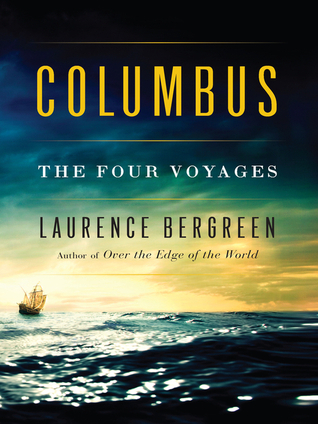
#5 Working Stiff: Two Years, 262 Bodies, and the Making of a Medical Examiner by Judy Melinek
This was a fascinating memoir about Dr. Judy Melinek who was a surgeon struggling with the work-life balance and decided to become a medical examiner in New York City.
“We group all deaths into six categories: homicide, suicide, accident, natural disease, therapeutic complication, and undetermined.”
She takes you through some of her training, the people she worked with and the cases that defined her career and helped her grown as a medical examiner.
“Once I became an eyewitness to death, I found that nearly every unexpected fatality I investigated was either the result of something dangerously mundane, or of something predictably hazardous.”
The last 25% of the book was also about her experience being an ME during 9-11. Having recently read a book about the 9-11 attacks, this was an interesting perspective on the recovery and identification process in the aftermath of the tragedy.
I’ve always been interested in this type of science. I used to love the CSI shows. This book definitely scratches that itch if you are interested in mysteries, science, CSI, etc. If you are squeamish, it may not be the book for you. There were definitely parts of the book that were too much for me and I skipped or skimmed the parts that were too gruesome to read about. But overall it wasn’t too gross. There was a pretty good balance of the science and memoir feel.
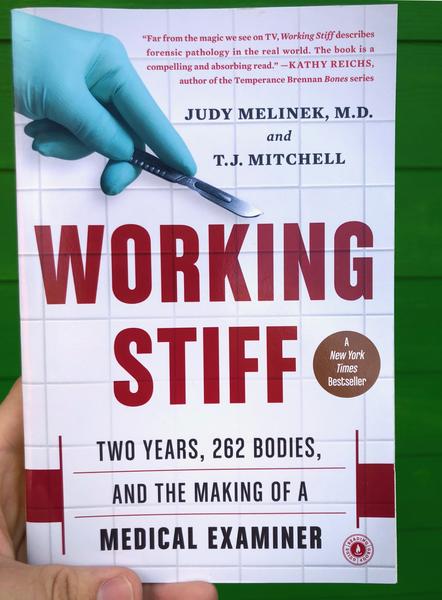
#6 Daughter of Moloka’i by Alan Brennert
This is the follow-up book to “Moloka’i”, which was excellent. This book follows Ruth, the daughter of Rachel (who spent most of her life in a leper colony on Moloka’i. Rachel was forced to give Ruth up at birth and she was sent to a home for a few years before being adopted by a Japanese couple in Hawaii.
The story is about Ruth’s life with her adopted family, how they moved to California to be farmers, and then World War 2 breaking out. The bulk of the story is about the Japanese Internment Camps, which are just absolutely heartbreaking and infuriating to read about. Families were given one week notice to pack up limited belongings and they were all sent to the camps, which were a step up from the concentration camps, but not by much. The conditions were horrible. These people lost EVERYTHING. When they were finally released and able to return “home” there was usually nothing left. They had to start completely over.
It was very eye-opening to read about. I knew a little bit about the internment camps but this was a lot of detail that really made it real.
The book is really good and more fast-paced than the first book.
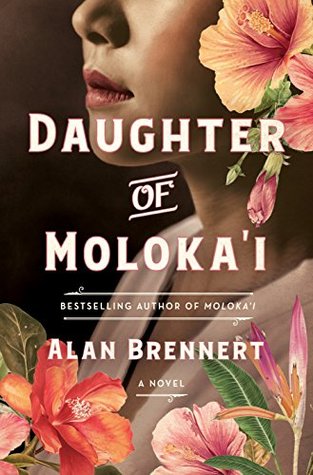
Happy reading!
These posts have Amazon Affiliate links
Marianne
Thanks for the book recommendations. I’m now just finishing The Family Upstairs by Lisa Jewell. It’s really good. Hope your feeling better.
Lisa Eirene
Thanks! I will add that to my list.
Feeling better but it’s slow this time
Vickie
I am working my way thru Louisa May Alcott. I had read all of them 40+ years ago. I did 8 Cousins and Rose in Bloom first. Because I remembered they were my favorites. Working on Old Fashioned Girl now, like it very much. Then starting on the big four in order: Little Women, Good Wives, Little Men, Jo’s Boys. All on audible.
This is how I usually read, if I love an author, I work thru all of them.
I will add a comment when I think of the title. But I saw a play with the Radium story years ago. Very good drama.
Vickie
These Shining Lives
Lisa Eirene
Oh that’s a good idea! I need to reread Little Women!
Wow I bet the play was good.
emmaclaire
Some good selections again, Lisa, thanks! Our book club just finished This Tender Land by William Kent Krueger. I had never read any of his books before, and this one moved right along. I found out he also has a set of mysteries he writes about former Chicago cop Cork O’Connor, now living in Minnesota, and there are 17 of them! Hard to believe I had never heard of them. I have the first one on hold at the library. Have you read any of them?
Lisa Eirene
Cork O’Connor sounds familiar, I feel like I might have read one of those! I will have to check.
Lisa Eirene
I went back and looked and read the first book and wanted to read the second. Thanks for the reminder!
emmaclaire
Well, if it passed the “Lisa Eirene good-enough-to-read-the-second-one” test, I’ll try them for sure!
Lisa Eirene
I believe I gave it 4 stars!